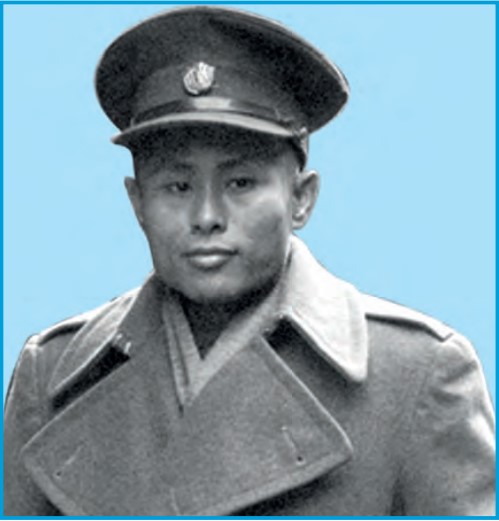10 July
19th July,1947-19th July,2020
General Aung San (13 Feb 1915 -19 Jul 1947)
GENERALAung San was born in Taungywa Gyi Village, Natmauk, Magway District on 13 February 1915. His father was U Phar, a lawyer, and his mother was Daw Suu. He was the youngest in 9 siblings. His childhood name was Htein Lin. As his elder brother’s name was Aung Than, he was named Aung San. His grandpa; Bo Min Yaung, a village headman of Myoe Lu Lin Village, fought against the British colonialists.
When he was eight years old in 1923, he received his primary education at a Buddhist monastic school named Natmauk De Pin Kayar U Thaw Bi Ta’s Lawka Dat Monastery.
1928 -- He attended Yenangyoung National High School for secondary education. He stood first in all classes.
1930 -- He passed the Seven Standard in the A category and he was one of the top 10 students at the national level. He was awarded a monthly stipend of 10 kyats for 3 years till he joined Rangoon (Yangon) College.
18 May 1930 -- His father, U Phar passed away.
In 1932 -- He matriculated with distinctions in Burmese and Pali.
He finished IA in Yangon University in 1934.
1935-36 -- He was elected as the executive committee member of the Rangoon University Student Union (RUSU), was in charge of Information and an editor of Oway Magazine.
1936 -- There appeared in print in the Oway magazine a provoking article entitled “ Hell Hound at Large”, which was actually written by Nyo Mya, which is considered as a lashing personal attack on Bursar U Tin. As a responsible editor of the magazine, Aung San refused to disclose the writer’s name. As a result, Ko Nu was expelled from the university in February. A rumour arose that Aung San was going to be expelled. This incident led to the Students’ Strike. After the strike, Aung San became vice president of the Rangoon University Student Union. Since then, the All-Burma Student Unions (ABSU) come to exist.
1938 -- He became president of RUSU and ABSU. At the same time, he joined Dobama Asiayone and became Thakhin Aung San. He resigned from RUSU and ABSU in November and started his career as a politician. Over a short period of time, he became the general secretary of Dobama Asiayone.
15 Aug 1939 -- The Communist Party of Burma (CPB) was formed and Thakhin Aung San served as Secretary of the CPB.
1 Oct 1939 -- He helped to found Bama-htwet-yat Ghine (Freedom Bloc) and became its general secretary. After a short period, he co-founded the People’s Revolutionary Party (PRP). After World War II, the party was renamed as the Burma Socialist Party and it existed as the central Underground Unit.
12 July 1940 -- He went underground due to an arrest warrant issued by the British government.
8 Aug 1940 -- He went to China with Thakin Hla Myaing (Bo Yan Aung) to contact with China Communist Party. They arrived in Amoy on 24 Aug and later reached Tokyo, Japan, on 12 November.
3 March 1941 -- He came back to Yangon, and one week later, on March 10, he and his four comrades arrived in Japan for military training with the first batch of the Thirty Comrades.
26 December 1942 -- The Burmese Independence Army (BIA) was founded in Bangkok, Thailand with the help of the Japanese and became chief-of-staff Major-General Aung San (Bo Teza).
20 May 1942 -- The British Army withdrew from Burma.
6 Sep 1942 -- He married Daw Khin Kyi.
13 June 1943 -- His first child, Aung San Oo was born. In July 27, BIA was formed into the Burma Defence Army (BDA). He served the duties of a colonel.
1 Aug 1943 -- When the Japanese declared Burma as an independent nation, he became War Minister.
10 May 1944 -- His second son, Aung San Lynn was born.
27 March 1945 -- The Burma Independent Army revolted against the fascists at Ponnar Kyun, Thayet District.
19 June 1945 -- His daughter, Aung San Suu Kyi was born.
9 April 1947 -- His party the Anti-Fascist People’s Freedom League (AFPFL) won the election and he was elected as a Member of Parliament.
13 January 1947 -- He went to London to reclaim Independence.
27 January 1947 -- Signed “Aung San–Attlee Agreement”
12 February 1947 -- Signed “Panglong Agreement” with 22 leaders from ethnic groups.
13 July 1947 -- He gave his last public speech urging his people to mend their ways and urge them for more disciplined.
19 July 1947 (Saturday) -- General Aung San and his cabinet members were assassinated by Galon U Saw and accomplices.


